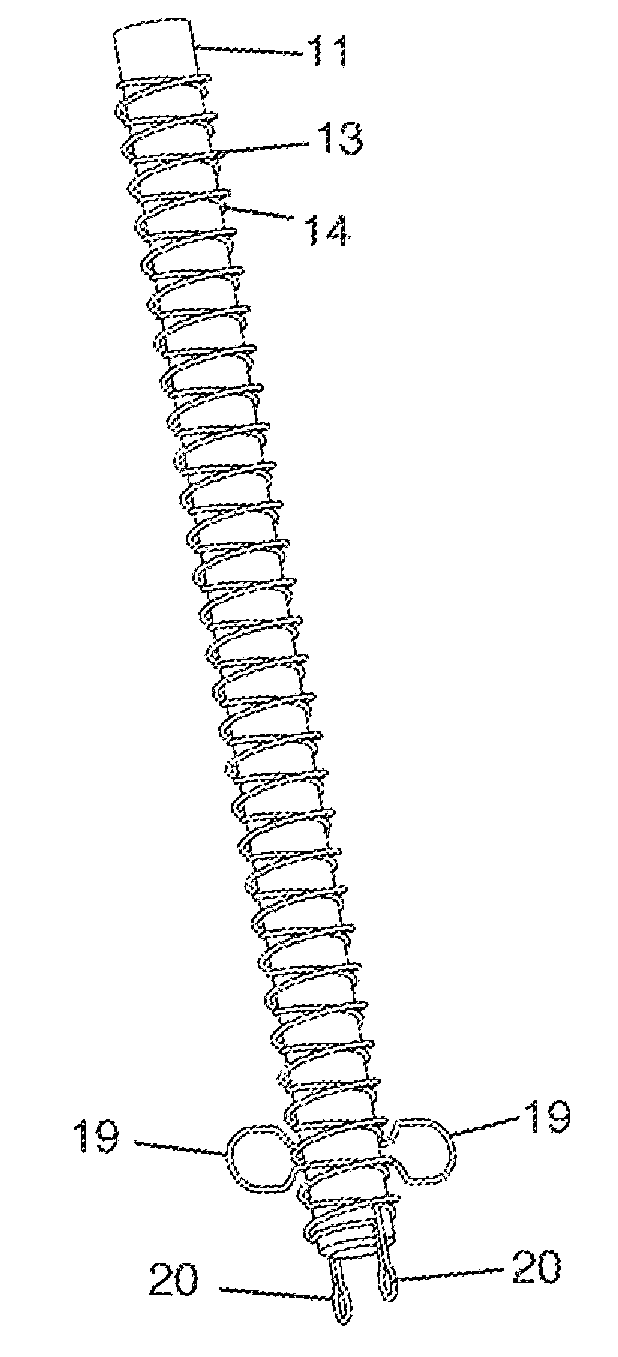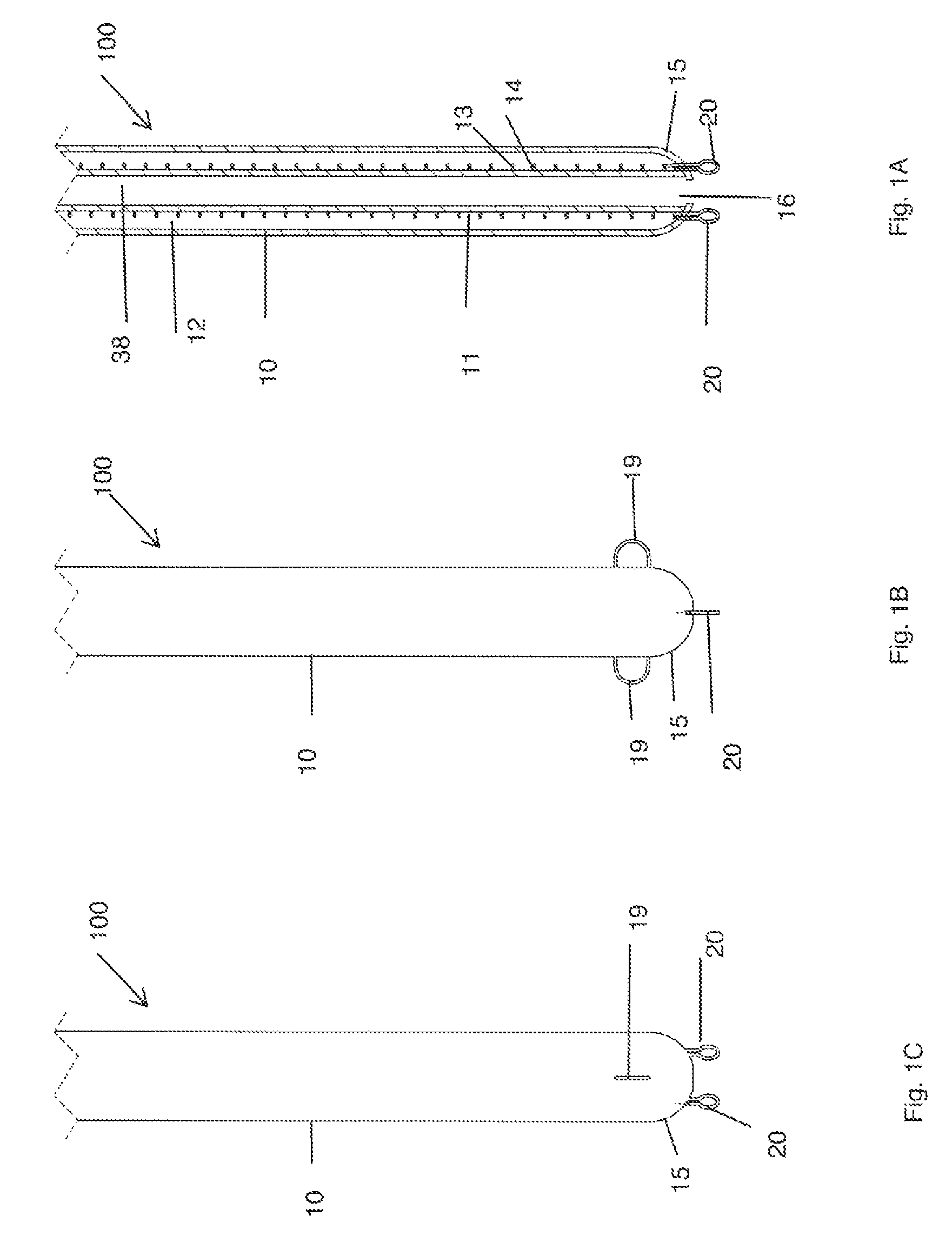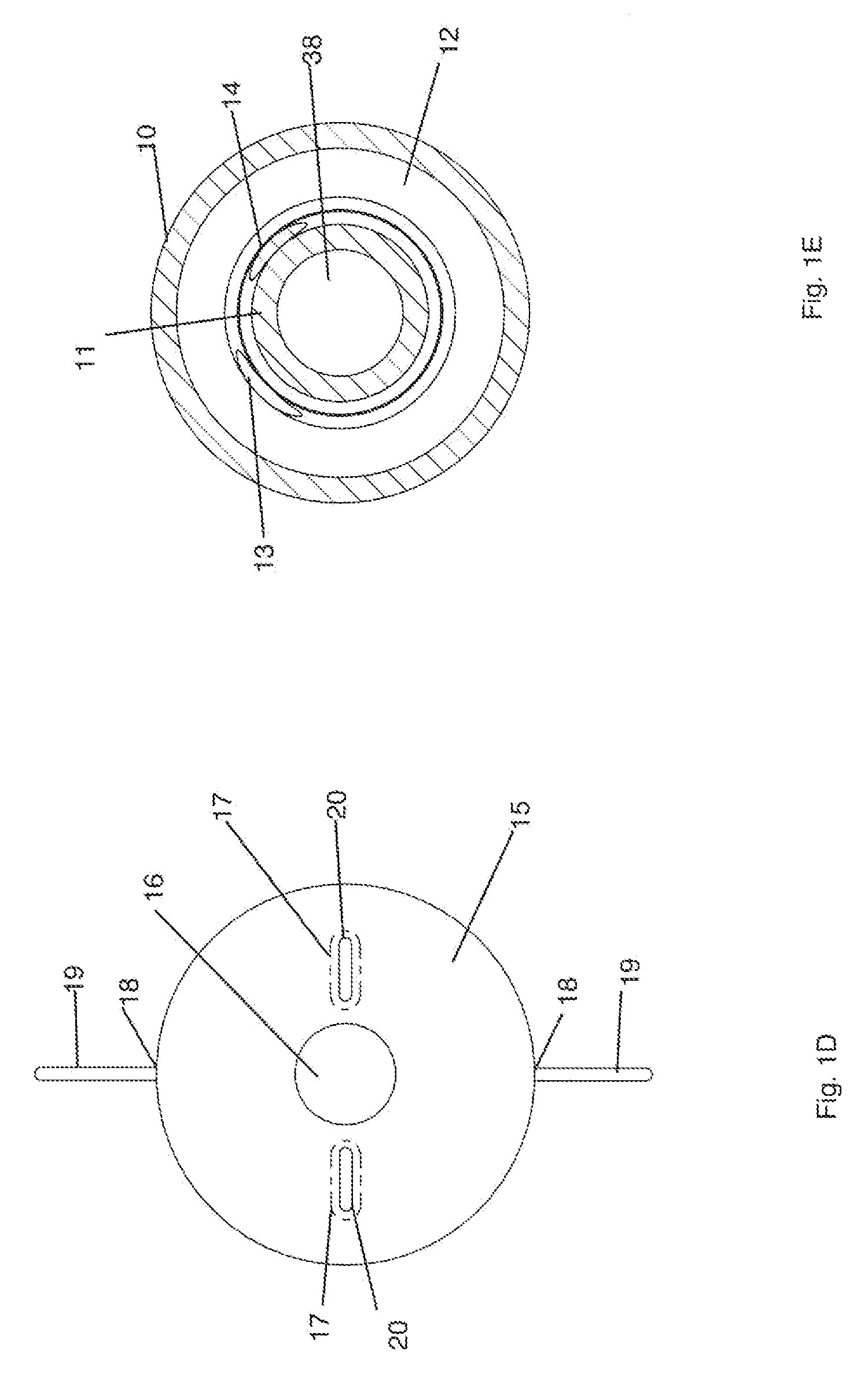Device and method for treating a chronic total occlusion
a total occlusion and device technology, applied in the field of recanalizing devices and blood vessels, can solve the problems of chronic total occlusions that can have serious medical consequences, inadequate support of dependent organ functions, and barely provide enough blood flow to keep the end organ alive, so as to prevent vessel damage, prevent blood vessel damage, and restore normal circulatory function
- Summary
- Abstract
- Description
- Claims
- Application Information
AI Technical Summary
Benefits of technology
Problems solved by technology
Method used
Image
Examples
Embodiment Construction
[0054]The invention now will be described more fully hereinafter with reference to the accompanying drawings, in which embodiments of the invention are shown. This invention may, however, be embodied in many different forms and should not be construed as limited to the embodiments set forth herein. Rather, these embodiments are provided so that this disclosure will be thorough and complete, and will fully convey the scope of the invention to those skilled in the art. Although the description of the invention is in the context of treatment of blood vessels, the invention may also be used in any other body passageways where it is deemed useful.
[0055]It will be understood that when an element is referred to as being “on” another element, it can be directly on the other element or intervening elements may be present there between. As used herein, the term “and / or” includes any and all combinations of one or more of the associated listed items.
[0056]It will be understood that, although t...
PUM
 Login to View More
Login to View More Abstract
Description
Claims
Application Information
 Login to View More
Login to View More - R&D
- Intellectual Property
- Life Sciences
- Materials
- Tech Scout
- Unparalleled Data Quality
- Higher Quality Content
- 60% Fewer Hallucinations
Browse by: Latest US Patents, China's latest patents, Technical Efficacy Thesaurus, Application Domain, Technology Topic, Popular Technical Reports.
© 2025 PatSnap. All rights reserved.Legal|Privacy policy|Modern Slavery Act Transparency Statement|Sitemap|About US| Contact US: help@patsnap.com



